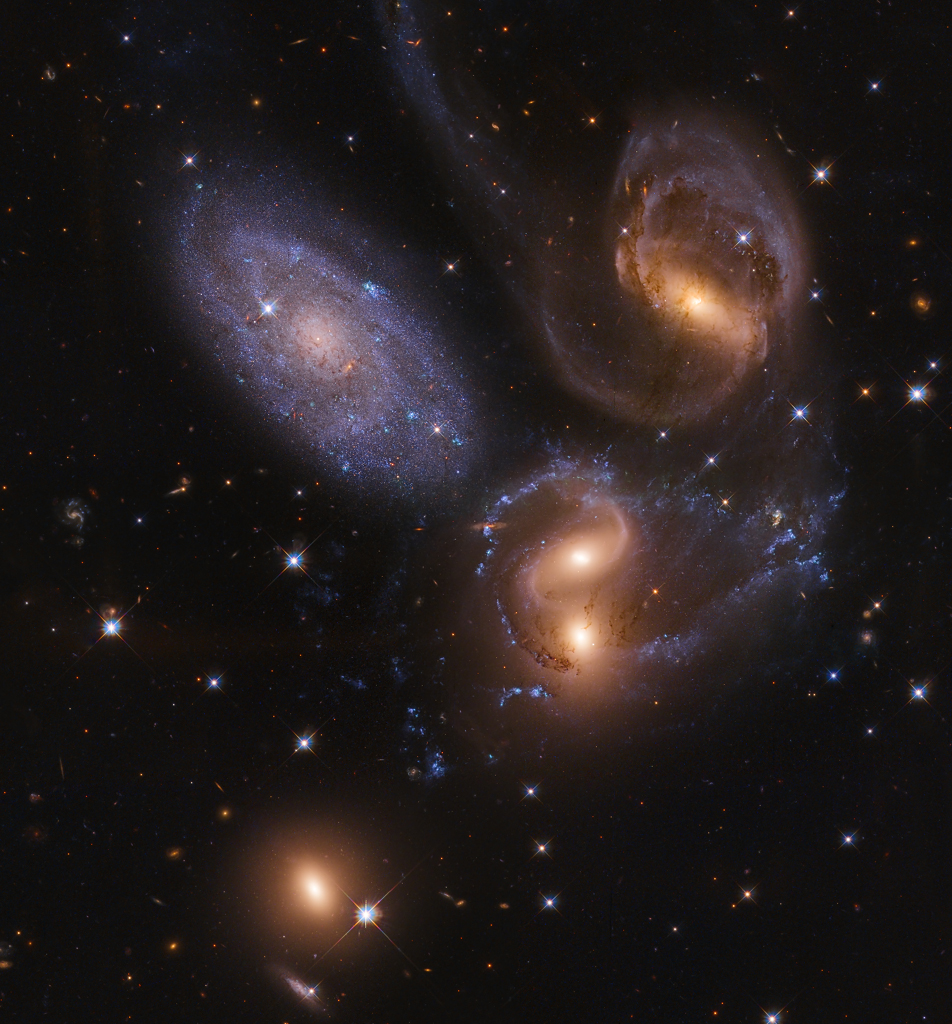2021年12月18日
Stephan’s Quintet
Image Credit: NASA, ESA, Hubble Legacy Archive;
Processing & Copyright: Bernard Miller
Explanation: The first identified compact galaxy group, Stephan’s Quintet is featured in this eye-catching image constructed with data drawn from the extensive Hubble Legacy Archive. About 300 million light-years away, only four of these five galaxies are actually locked in a cosmic dance of repeated close encounters. The odd man out is easy to spot, though. The interacting galaxies, NGC 7319, 7318A, 7318B, and 7317 have an overall yellowish cast. They also tend to have distorted loops and tails, grown under the influence of disruptive gravitational tides. But the predominantly bluish galaxy, NGC 7320, is closer, just 40 million light-years distant, and isn’t part of the interacting group. Stephan’s Quintet lies within the boundaries of the high flying constellation Pegasus. At the estimated distance of the quartet of interacting galaxies, this field of view spans about 500,000 light-years. But moving just beyond this field, up and to the right, astronomers can identify another galaxy, NGC 7320C, that is also 300 million light-years distant. Including it would bring the interacting quartet back up to quintet status.
Tomorrow’s picture: five in a row
史蒂芬五重星系
影像提供: NASA, ESA, Hubble Legacy Archive;
影像处理与版权: Bernard Miller
说明: 这幅吸睛的影像,建构自巨细靡遗的哈勃影像资料库,主题是人类发现的第一个紧密星系群 — 史蒂芬五重星系 (Stephan’s Quintet)。在飞马座方向约3亿光年远处的这5个星系,其实只有4个星系反复在进行近距离接近的宇宙之舞。唯一离群索居的星系轻易可辨,因为4个相互作用星系 (NGC 7319、7318A、7318B、和 7317)的色泽泛黄,并在破坏性重力潮汐的拉扯下,拥有逐渐增长的扭曲圈状星系环和潮汐尾。非常醒目的泛蓝星系NGC 7320C,比其他四个星系要近很多,大约只有4千万光年远,所以并不是相互作用星系群的成员。以这4个相互作用星系群的估计距离来换算,这幅影像大约涵盖500,00光年的区域。在这片视野的右上方外头,天文学家发现还有另一个距离也约是3亿光年远的星系NGC 7320C。所以如果把这个星系算进来,这群相互作用星系的成员就会回到5个。
明日的图片: five in a row







